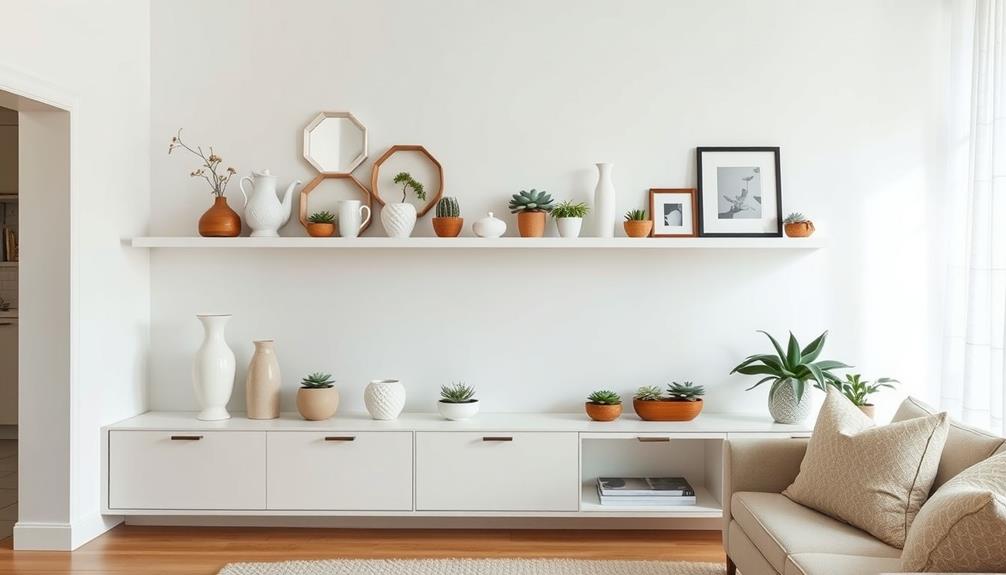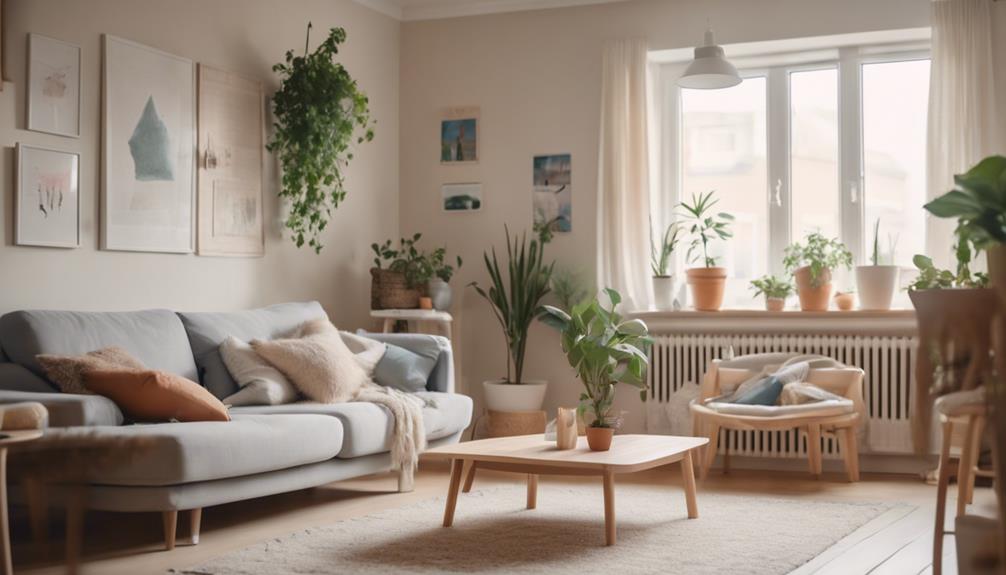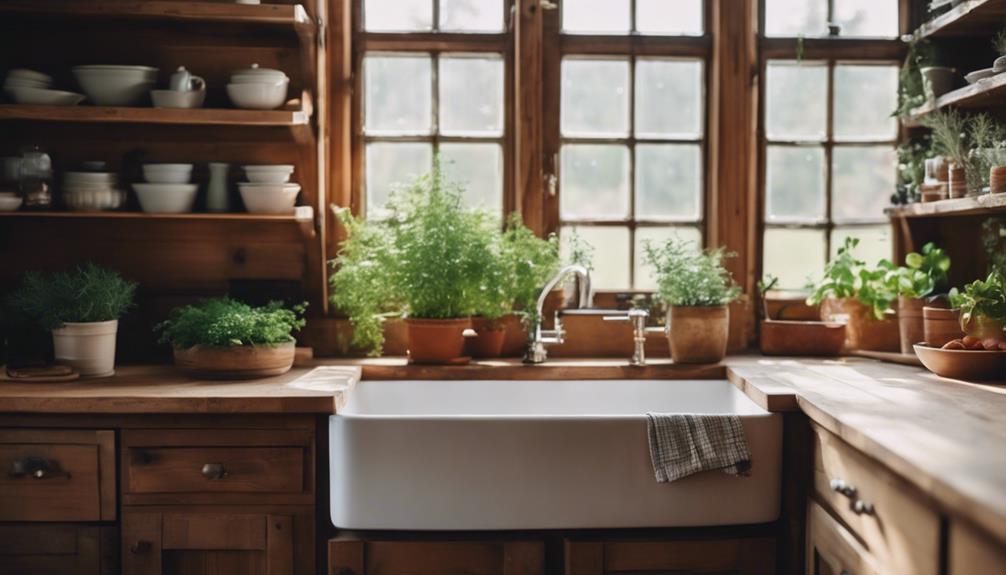Some cultures prefer to have dinner late at night as it promotes social connections and fits in with their daily rhythms. In countries like Spain and Italy, families typically dine between 9 to 11 p.m. which allows them to unwind and savor long meals following a hearty lunch. The warm weather also plays a role as people often wait for the heat to dissipate before enjoying their meals. Moreover, traditions such as siestas in places like Mexico encourage later dinners, strengthening bonds over food. This late-night dining is not only about sustenance; it is a beloved cultural practice. If you’re interested in learning more about specific customs, there is much more to explore.
Key Takeaways
- Warmer climates in Southern Europe and Latin America encourage late dinners to escape daytime heat and promote social interaction.
- Cultural traditions prioritize family bonding through extended meals, as seen in Spain and Mexico, where dinner times foster deeper connections.
- Historical shifts from midday meals to later dinners reflect urban lifestyles and the value of socialization over strict scheduling in these regions.
- Siestas and long lunch breaks in countries like Spain and Mexico allow for lighter evening meals, aligning with communal dining practices.
- Late dining promotes relaxation and enjoyment, with multi-course meals and festive gatherings emphasizing cultural values of togetherness and celebration.
Cultural Attitudes Towards Dining

When you explore cultural attitudes towards dining, you'll notice that meal times vary considerably around the world, often reflecting deeper societal values.
In Southern Europe, for instance, countries like Spain and Italy embrace late dinner times, typically around 9-11 p.m. This practice isn't just about eating; it's about savoring long, leisurely meals that foster socializing and relaxation.
Similarly, many Latin American cultures, including Mexico and Brazil, also opt for late dinners around 9 p.m., highlighting the importance of family time and communal dining experiences, often featuring traditional dishes like Caldeirada or Caruru that bring people together.
In Greece, the late dining tradition links to the climate, with dinner served around 10-11 p.m., making evenings a perfect time for social engagement.
In contrast, China often enjoys family dinners between 6-8 p.m., emphasizing connection after a long day, though social dining can extend later.
Meanwhile, Japan values harmony and balance at the dinner table, typically serving meals between 6-8 p.m., featuring elaborate presentations that celebrate seasonal ingredients.
Regional Dinner Time Variations

Cultural dining practices shape when people eat, and regional variations highlight these differences.
In Spain, for instance, you'll find dinner time usually falls between 9:00 and 11:00 p.m., a schedule influenced by the siesta culture and a strong emphasis on socializing during meals.
If you head to Italy, dinner typically starts from 8:00 to 10:00 p.m., often featuring traditional dishes like Agnolotti or pasta with tomato sauce, with gatherings often extending for hours, showcasing the importance of family in their dining culture.
Greece takes late dinners to another level, with meals often beginning around 10:00 to 11:00 p.m., following a substantial lunch enjoyed between 2:00 and 3:00 p.m.
Mexico shares a similar pattern, where traditional dinners are served around 9:00 to 10:00 p.m., promoting social aspects during the evening hours.
In Brazil, however, you'll see a slightly earlier dinner time, ranging from 7:00 to 9:00 p.m., reflecting their vibrant dining culture, which also focuses on family gatherings.
These regional dinner time variations illustrate how cultural practices shape not just when you eat, but also the social dynamics tied to meal times.
Social Aspects of Late Dining

Embracing late dining traditions allows communities to foster deeper connections among family and friends. In cultures like Spain and Mexico, the evening meal often starts around 9-11 p.m., becoming a crucial opportunity for socializing. Sharing tapas in Spain exemplifies this, as people gather around small plates, extending conversations and laughter late into the night.
In Mexico, dishes such as chilaquiles serve as a perfect late-night snack, encouraging people to linger over their meals and enjoy the flavors together.
In Greece, dinner isn't just about eating; it's a leisurely affair that can last for hours, emphasizing the joy of companionship.
The emphasis on family meals is also strong in Brazil, where dinner typically occurs between 7-9 p.m. This time serves as a precious moment for family bonding after a busy day.
In Italy, late dining signifies social status, as multi-course meals transform into communal experiences. Starting between 8-10 p.m., these gatherings showcase the importance of family and friends coming together around the table.
These late-night dining practices highlight how food transcends mere sustenance, becoming a catalyst for social interaction and strengthening familial ties.
Influence of Climate on Meal Times

As the sun sets and temperatures cool, many cultures alter their dining habits to later in the evening. In warmer climates, such as those found in Southern Europe and Latin America, you'll notice that dinner time often falls around 9-11 p.m. This preference for eating late stems from the desire to dine after the heat of the day has subsided.
In Ethiopia, for instance, communal meals often take place in the evening, featuring dishes like Yetimatim Fitfit that celebrate the flavors of fresh ingredients.
In countries like Spain and Mexico, afternoon siestas play an important role in adjusting meal times. With a leisurely lunch, people naturally adapt to later dinners, allowing for relaxed social gatherings.
The cultural practices surrounding dining in these regions promote extended meals, where friends and family can enjoy each other's company in the cooler evening air.
Conversely, in cooler climates like Norway and Finland, you'll find that dinner time typically occurs earlier, around 4-6 p.m. This timing helps residents maximize daylight and warmth during their meals.
Historical Context of Dinner Timing

Dinner timing has evolved considerably over the centuries, shaped by societal changes and economic demands. Historically, you'd find families enjoying their main meal around midday.
However, the industrial revolution transformed this routine dramatically. As standardized work hours emerged, dinner shifted to earlier times, often around 5 or 6 p.m., to accommodate the new 9-to-5 work model. This change reflected a broader historical context where urbanization and factory work became central to daily life.
In many cultures, the timing of meals often reflects traditional dishes enjoyed during these times; for instance, Mushroom Masala is a popular vegetarian option that can be served at dinner.
Middle-class values further cemented this trend, idealizing early dinners as a crucial social ritual, depicted in artworks like those of Norman Rockwell.
In contrast, cultural differences are starkly evident in regions like Southern Europe and Latin America, where late dinners prevail. In these cultures, mealtime prioritizes social gatherings and leisurely eating, deeply influenced by traditional lifestyles and the climate.
This late dining practice often symbolizes a rejection of conventional work models. It showcases a lifestyle that values socialization and connection over strict scheduling, making it clear that dinner timing isn't just about sustenance but also about culture and community.
Family and Community Connections

In many cultures, family and community connections thrive during late-night meals, which serve as a vital time for bonding and conversation. Dinner time transforms into a social event, allowing families to reconnect after a busy day. In Greece, this is often accompanied by traditional dishes like Horiatiko Psomi (Country Bread), which enhances the communal experience.
- In Spain, dinners start around 9-11 p.m., creating an atmosphere for families to gather and share their day's experiences.
- Italy takes this further, where meals can last several hours, emphasizing the joy of togetherness.
- In Mexico, while dinner might seem less significant, evening snacks and street food foster community bonding through social interactions.
- Brazilian dinners, typically served from 7-9 p.m., highlight the importance of family connections, as meals are often enjoyed collectively.
- Greece promotes late dinners around 10-11 p.m., encouraging extended conversations and reinforcing cultural values centered on family and community.
These late-night meals not only satisfy hunger but also strengthen relationships among family members and friends.
Health Implications of Late Meals

Late meals, while culturally significant, can pose health challenges when consumed close to bedtime. If you're indulging in late-night dining, be aware of potential health implications. Eating heavy meals just before sleeping can disrupt your sleep patterns and lead to digestive discomfort. Studies show that gastric reflux is more likely when you've had a big dinner late at night.
Here's a quick look at some health implications of late-night meals:
| Health Implication | Description | Recommendation |
|---|---|---|
| Sleep Disruption | Late meals can interfere with restful sleep. | Opt for lighter meals before bedtime. |
| Gastric Reflux | Heavy meals may increase reflux risk. | Avoid spicy or fatty foods late at night. |
| Weight Management | Late-night eating can lead to overeating. | Be mindful of portion sizes. |
| Digestive Discomfort | Eating too close to bedtime may cause discomfort. | Allow time for digestion before sleeping. |
The Role of Siestas and Breaks

In cultures where siestas are a daily ritual, you'll find that the afternoon break greatly influences meal timing.
With long lunches and the importance of evening socialization, dinner often stretches into the late hours.
This relaxed approach transforms meals into cherished moments of connection rather than rushed obligations.
The communal aspect of dining can be seen in traditional Southern dishes like soulful comfort food, which are often shared among family and friends during these late-night gatherings.
Cultural Napping Traditions
Many Southern European cultures embrace the tradition of the siesta, which transforms the way meals are enjoyed later in the day. By taking a break in the afternoon, you're not just resting; you're participating in a cultural napping tradition that enriches social interactions.
This afternoon respite leads to longer, leisurely evening dinners, typically served around 9 to 11 p.m. The relaxed atmosphere created by this practice allows for the savoring of diverse culinary delights, such as Yebeg Wat, which can be enjoyed in these social settings.
Here are some key aspects of this tradition:
- Family bonding: The siesta encourages family gatherings around lunch.
- Business closure: Many shops shut down from 2:00 p.m. to 5:00 p.m., allowing for relaxation.
- Heat relief: A midday break offers respite from the scorching sun, enhancing comfort.
- Socializing: Siestas create a relaxed atmosphere for reconnecting with friends and family.
- Light dinners: With a hearty lunch, evening meals tend to be lighter and more casual.
This cultural practice helps shape dining into a true social event, emphasizing connection and relaxation among loved ones.
Afternoon Meal Duration
Taking a leisurely approach to the afternoon meal greatly shapes dining culture in Southern European countries. In Spain and Greece, the afternoon meal can stretch to 2 to 3 hours, allowing for a rich social experience. This extended lunch not only nurtures relationships but also sets the stage for later dinner times, aligning with cultural expectations.
Here's a quick overview of how afternoon meals influence dining habits across different cultures:
| Country | Afternoon Meal Duration |
|---|---|
| Spain | 2 to 3 hours |
| France | Multiple courses, 2 hours |
| Mexico/Brazil | Longer lunch breaks |
The tradition of siestas, especially in Spain, encourages you to rest during the hottest part of the day, shifting dining habits toward later evening meals. In countries like Mexico and Brazil, lighter dinners are served around 9 p.m. to 10 p.m., thanks to prolonged lunch breaks. Meanwhile, France's leisurely lunches reinforce the expectation of dining later in the evening, usually between 7:30 p.m. and 9:30 p.m. This relaxed approach creates a unique rhythm to daily life, prioritizing connections and culinary enjoyment.
Evening Socialization Importance
The leisurely pace of afternoon meals naturally leads to a vibrant evening social scene, especially in cultures like Spain and Mexico. When you take the time to enjoy a siesta, it fosters a relaxed atmosphere that enhances socialization during dinner.
Late dining, typically around 9-11 p.m., creates the perfect setting for friends and family to gather, strengthening communal bonds. This is reminiscent of the way Txakoli (White Wine) is often enjoyed with seafood during these late meals, enhancing both the flavors and the social experience.
Here are some key aspects of evening socialization:
- Shared meals encourage deeper connections.
- Extended dining hours allow for rich conversations.
- Multi-course dinners create an enjoyable experience.
- Cultural traditions come alive through communal eating.
- Relaxed atmospheres help you unwind after the day.
In places like Greece, long lunches often stretch into the evening, reinforcing the importance of social interaction.
Late dinners not only provide a relaxed dining atmosphere but also promote togetherness, making meals a celebration of life and culture. Emphasizing evening socialization reflects a lifestyle that values relationships, where dining becomes more than just eating—it's about connecting with those you care about.
Dining Habits Across Continents

When you think about dining habits across continents, you'll notice that cultural meal timing varies widely.
In Southern Europe, for example, late dinners are a social norm, often accompanied by a variety of appetizers such as loaded baked potatoes or salads that encourage leisurely meals.
In Northern Europe, people tend to eat much earlier.
These differences reflect not just personal preferences but also regional influences and social dining practices. In some cases, these preferences are shaped by the availability of local ingredients or traditional methods of food preparation unique to specific areas. Additionally, foods connected to certain jobs, such as hearty stews for farmers or quick street snacks for busy urban workers, highlight how professions can influence dietary habits. This relationship between work and cuisine emphasizes how food can serve both practical and cultural functions in daily life.
Cultural Meal Timing
How do cultural factors shape the timing of meals across different regions? Your dinner time can reveal a lot about the cultural norms and eating habits of a place. For example, in Southern Europe, cultures like Spain and Italy often serve dinner late, between 9 p.m. and 11 p.m., thanks to traditions like the siesta.
In contrast, Northern European countries, such as Norway and Germany, typically enjoy dinner earlier, around 4 p.m. to 7 p.m., focusing on lighter meals.
Here are some fascinating insights into global meal timing:
- Southern Europe: Late dinners and larger lunches are the norm.
- Mexico: Dinner around 9 p.m. features lighter fare after a substantial midday meal.
- Greece: You'll find dinners served between 10 p.m. and 11 p.m., with lunch as the largest meal of the day.
- Northern Europe: Earlier, lighter evening meals cater to different lifestyles.
- Warm Climates: Late dining takes advantage of cooler evening temperatures.
These diverse eating habits reflect how cultural norms and daily routines influence what, when, and how we eat.
Social Dining Practices
Across continents, social dining practices reveal much about cultural values and connections. In Mediterranean cultures, such as Greece and Italy, dinner time typically falls between 9 p.m. and 10 p.m. Here, meals transform into leisurely social events, often lasting several hours. You'll find friends and family gathered around the table, enjoying each other's company while indulging in a variety of dishes.
In Spain, dinner is served late, around 9 p.m. to 11 p.m., influenced by the siesta culture and the tradition of sharing tapas before the main meal. Latin American countries like Mexico and Brazil follow a similar pattern, with dinner times around 9 p.m. to 10 p.m., emphasizing family gatherings and socializing.
In contrast, Northern European countries like Norway and Finland prefer earlier dinners, typically served between 4 p.m. and 6 p.m. These cultures lean towards lighter meals and a more family-oriented dining experience.
Meanwhile, countries like China and Japan favor dinner times between 6 p.m. and 8 p.m., focusing on communal dining practices that strengthen family connections. Each of these practices highlights the unique social fabric woven into the fabric of everyday life.
Regional Influences on Timing
Dining habits vary considerably from one region to another, shaped by cultural practices, climate, and social norms. When it comes to dinner time, you'll notice distinct patterns influenced by these factors.
- Southern Europe enjoys late dining, with dinner often served between 9 p.m. and 11 p.m.
- Northern Europe tends to have earlier dinners, typically from 4 p.m. to 7 p.m.
- Latin American countries favor a late dinner, usually around 7 p.m. to 10 p.m.
- In Asia, dinner generally occurs between 6 p.m. and 8 p.m., focusing on family gatherings.
- Urban areas worldwide often adopt later dining habits due to busy work schedules.
These regional influences on timing reflect deeper cultural preferences. For instance, the siesta culture in Southern Europe encourages later meals, while the lighter evening meals in Northern Europe cater to different lifestyle choices.
In Latin America, larger midday meals allow for later dinners, while Asian cultures prioritize communal dining.
Understanding these variations helps you appreciate the rich tapestry of dining traditions across continents, revealing how dinner time is more than just a meal—it's a reflection of a culture's values and lifestyle.
Celebrations and Festive Meals

While many cultures cherish the importance of gathering for meals, celebrations often take the dining experience to another level, embracing late-night feasts that foster connection and joy.
In countries like Spain and Mexico, festive occasions see dinner served between 9:00 and 11:00 p.m., creating an atmosphere of excitement and togetherness. In Greece, dining becomes a social event during holidays, kicking off around 10:00 p.m. or later, allowing you to enjoy lengthy conversations over delicious food.
Major holidays, such as New Year's Eve or Christmas, often lead families to extend dinner times, accommodating multi-course meals that can last several hours. Italy exemplifies this with its slow-paced festive meals, typically served between 8:00 and 10:00 p.m., encouraging socializing among friends and family.
Cultural celebrations and communal gatherings frequently highlight late-night dining, reflecting the idea that food is more than just sustenance—it's a means of connection.
Frequently Asked Questions
What Cultures Eat Late at Night?
If you explore global dining habits, you'll find cultures like Spain, Mexico, Greece, and Italy enjoying late dinners. Each culture embraces unique traditions, often making meals a social event that extends into the evening.
Why Do Spanish Eat Dinner so Late?
You'd think Spaniards are just night owls, but they actually savor the cooler evenings. With long lunches, siestas, and social gatherings, they turn dinner into a delightful, leisurely experience—perfect for unwinding after a bustling day.
What Country Eats Dinner at 11PM?
In Argentina, you'll often find dinner starting around 10 p.m. or 11 p.m. It's a vibrant time for families to gather, enjoy long meals, and connect, embracing the culture of late-night dining.
Why Do People in America Eat Dinner so Early?
Isn't it curious how dinner time shapes your evening? In America, you eat early to align with work schedules and family routines, making the evening a time for connection and relaxation after a busy day.
Conclusion
In many cultures, dining late isn't just a habit; it's a way of life. Did you know that in Spain, it's common for dinner to start as late as 10 PM, with over 70% of people embracing this timing? This late-night tradition reflects not only social customs but also the climate, where warm evenings invite longer gatherings. So next time you find yourself dining late, remember, it's part of a rich tapestry of cultural practices worldwide.







